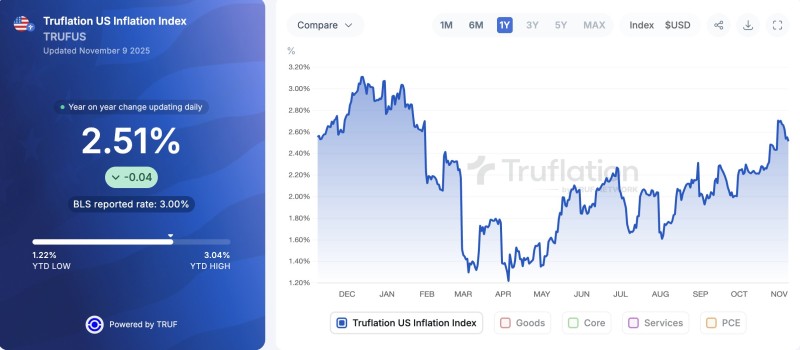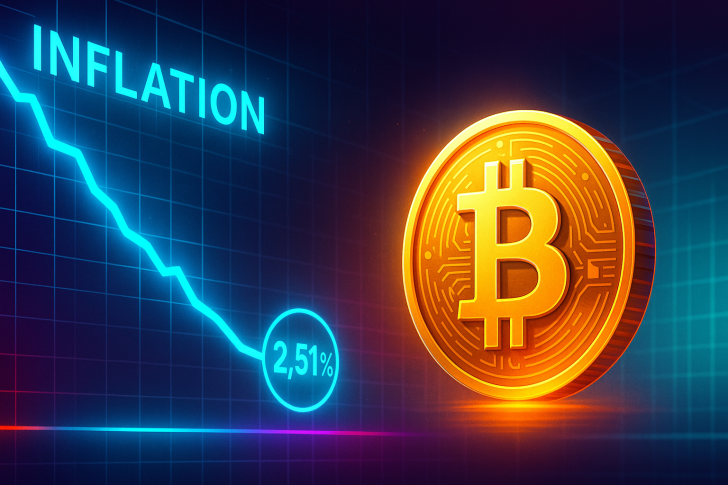Inflation in the United States is cooling again, and the latest real-time data suggests the disinflation trend may be picking up steam. The updated Truflation US Inflation Index reports an annual rate of 2.51%, down from earlier November highs and notably below the official 3.00% BLS figure. This fresh decline has quickly sparked speculation across financial markets, especially among digital-asset traders who see easing inflation as increasing the likelihood of additional rate cuts — a scenario that historically boosts Bitcoin and broader crypto liquidity.
Inflation Slides Despite Recent Volatility
Taking a closer look at the numbers, we can see some interesting patterns throughout the year.

The data reveals a somewhat bumpy ride, with inflation experiencing significant swings over the past twelve months:
- Inflation bounced around between 2.6% and 3.2% during the first quarter
- A sharp drop in March sent the rate down toward 1.4%, hitting the lowest point in the past year
- Through summer and early fall, inflation gradually climbed back toward the 3.0% mark
- In late October and early November, inflation peaked near 3.04% before sliding to the current 2.51%
The latest move lower clearly shows inflation is easing, which has traders paying attention.
What's Behind the Inflation Drop?
Several factors help explain why inflation is coming down. Goods prices have softened throughout the year thanks to improved supply chains and stable commodity markets. High borrowing costs have cooled consumer demand in housing, automobiles, and durable goods, which takes pressure off prices. Even service inflation — usually the toughest category to bring down — has eased enough to pull the overall rate lower. With the Truflation Index now sitting below the official BLS reading, traders are increasingly betting on earlier-than-expected monetary easing.
Why This Matters for Bitcoin and Crypto
Crypto markets are extremely sensitive to liquidity conditions. When inflation cools, it supports a more dovish Federal Reserve, which typically means lower interest rates, a weaker dollar, increased capital flows into high-risk assets, and stronger demand for Bitcoin as a hedge against traditional markets. Digital assets tend to perform well during periods of falling inflation and easier monetary policy, which explains the bullish sentiment in the crypto community right now.
 Saad Ullah
Saad Ullah

 Saad Ullah
Saad Ullah

